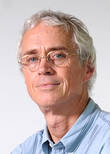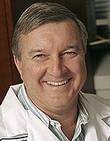Robert J. Gillies is vice-chair of Radiology, director of the Department of Imaging Research and co-leader of the Experimental Therapeutics Programme at the Moffitt Cancer Center in Tampa, USA. His research is focused on functional and molecular imaging of cancer: tumour microenvironment, imaging biomarkers for therapy, tumour targeting ligands. He is a member of the Cell and Molecular Imaging Probes - CMIP study section at NIH and a member of IRG-A Cancer Center Grants parent committee at NCI.
ABSTRACT Robert Gillies



